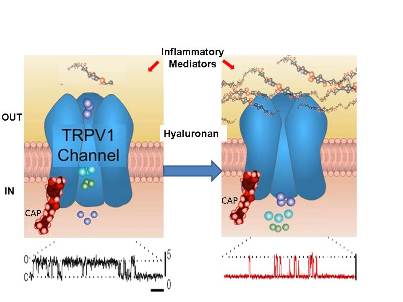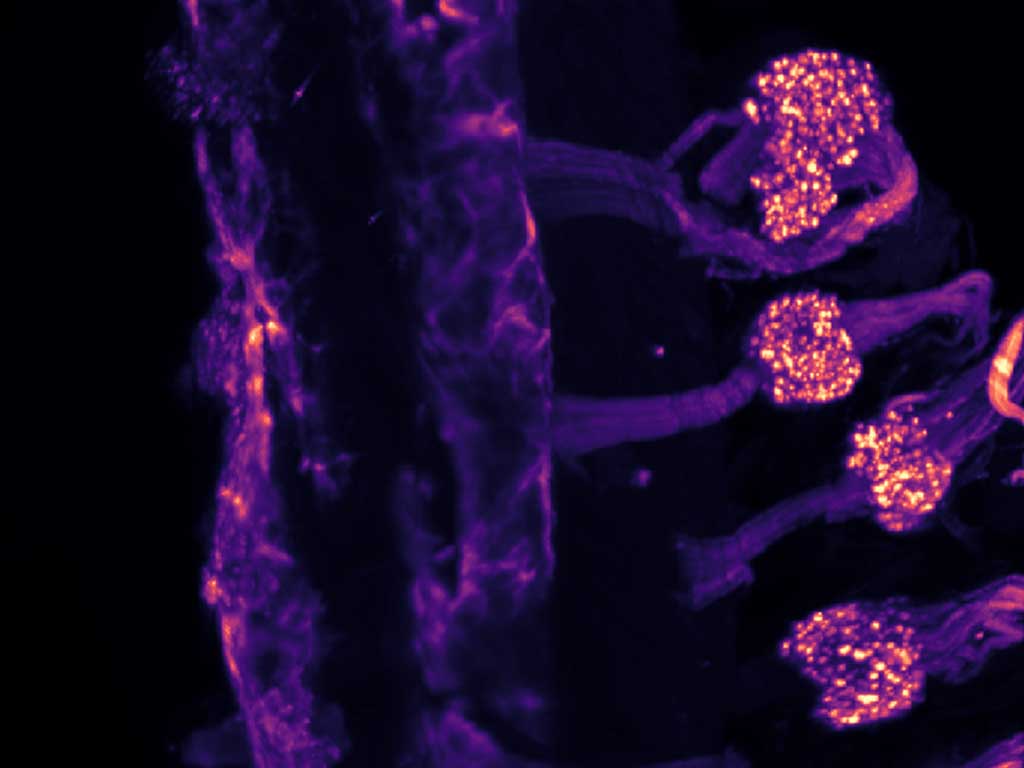Hyaluronan modulates TRPV1 channel opening, reducing peripheral nociceptor activity and pain
Hyaluronan (HA) is present in the extracellular matrix of all body tissues, including synovial fluid in joints, in which it behaves as a filter that buffers transmission of mechanical forces to nociceptor nerve endings thereby reducing pain. Using recombinant systems, mouse-cultured dorsal root ganglia (DRG) neurons and in vivo experiments, we found that HA also modulates polymodal transient receptor potential vanilloid subtype 1 (TRPV1) channels. HA diminishes heat, pH and capsaicin (CAP) responses, thus reducing the opening probability of the channel by stabilizing its closed state. Accordingly, in DRG neurons, HA decreases TRPV1-mediated impulse firing and channel sensitization by bradykinin. Moreover, subcutaneous HA injection in mice reduces heat and capsaicin nocifensive responses, whereas the intra-articular injection of HA in rats decreases capsaicin joint nociceptor fibres discharge. Collectively, these results indicate that extracellular HA reduces the excitability of the ubiquitous TRPV1 channel, thereby lowering impulse activity in the peripheral nociceptor endings underlying pain.


 Español
Español
